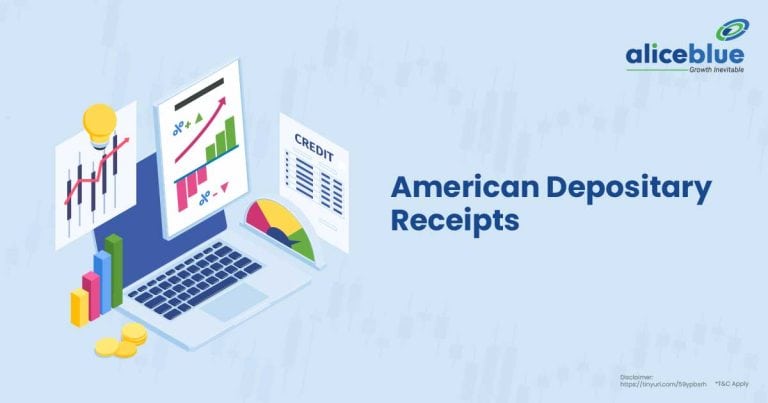The below table shows a list Of the Best Floating Rate Funds Based on AUM, NAV and minimum SIP.
| Name | AUM (Cr) | NAV (Rs) | Minimum SIP (Rs) |
| HDFC Floating Rate Debt Fund | 15,189.39 | 47.68 | 1,500 |
| Aditya Birla SL Floating Rate Fund | 12,671.53 | 334.88 | 1,000 |
| ICICI Pru Floating Interest Fund | 8,965.52 | 433.71 | 100 |
| Nippon India Floating Rate Fund | 7,764.33 | 44.35 | 100 |
| Franklin India Floating Rate Fund | 303.63 | 41.48 | 500 |
Introduction to Top Performing Floating Rate Funds in 10 Years
HDFC Floating Rate Debt Fund
HDFC Floating Rate Debt Fund Direct Plan-Growth is a Floater mutual fund scheme from HDFC Mutual Fund. This fund has been in existence for 11 years and 8 months, having been launched on 01/01/2013.
HDFC Floating Rate Debt Fund as a credit risk fund, manages assets valued at ₹15189.39 crore. Over the past 5 years, it has achieved a Compound Annual Growth Rate (CAGR) of 6.98%. This fund has no exit load and an expense ratio of 0.26%. According to SEBI, it falls under the Very High-risk category. The fund’s asset allocation comprises No Equity, Debt at 96.16% and Other at 3.84%.
Aditya Birla SL Floating Rate Fund
Aditya Birla Sun Life Floating Rate Direct Fund-Growth is a Floater mutual fund scheme from Aditya Birla Sun Life Mutual Fund. This fund has been in existence for 11 years and 8 months, having been launched on 01/01/2013.
Aditya Birla SL Floating Rate Fund as a credit risk fund, manages assets valued at ₹12671.53 crore. Over the past 5 years, it has achieved a Compound Annual Growth Rate (CAGR) of 6.65%. This fund has no exit load and an expense ratio of 0.23%. According to SEBI, it falls under the Very High-risk category. The fund’s asset allocation comprises No Equity, Debt at 96.94% and Other at 3.06%.
ICICI Pru Floating Interest Fund
ICICI Prudential Floating Interest Fund Direct Plan-Growth is a Floater mutual fund scheme from ICICI Prudential Mutual Fund. This fund has been in existence for 11 years and 8 months, having been launched on 01/01/2013.
ICICI Pru Floating Interest Fund as a credit risk fund, manages assets valued at ₹8965.52 crore. Over the past 5 years, it has achieved a Compound Annual Growth Rate (CAGR) of 7.43%. This fund has no exit load and an expense ratio of 0.56%. According to SEBI, it falls under the Very High-risk category. The fund’s asset allocation comprises No Equity, Debt at 94.75% and Other at 5.25%.
Nippon India Floating Rate Fund
Nippon India Floating Rate Fund Direct-Growth is a Floater mutual fund scheme from Nippon India Mutual Fund. This fund has been in existence for 11 years and 8 months, having been launched on 01/01/2013.
Nippon India Floating Rate Fund as a credit risk fund, manages assets valued at ₹7764.33 crore. Over the past 5 years, it has achieved a Compound Annual Growth Rate (CAGR) of 7.14%. This fund has no exit load and an expense ratio of 0.31%. According to SEBI, it falls under the Very High-risk category. The fund’s asset allocation comprises No Equity, Debt at 94.84% and Other at 5.16%.
Franklin India Floating Rate Fund
Franklin India Floating Rate Fund Direct-Growth is a Floater mutual fund scheme from Franklin Templeton Mutual Fund. This fund has been in existence for 11 years and 8 months, having been launched on 01/01/2013.
Franklin India Floating Rate Fund as a credit risk fund, manages assets valued at ₹303.63 crore. Over the past 5 years, it has achieved a Compound Annual Growth Rate (CAGR) of 6.54%. This fund has no exit load and an expense ratio of 0.24%. According to SEBI, it falls under the Very High-risk category. The fund’s asset allocation comprises No Equity, Debt at 98.65% and Other at 1.35%.

What Are Floating Rate Funds?
Floating rate funds are investment vehicles that primarily invest in bonds or loans with interest rates that adjust periodically based on market conditions. These rates typically reset quarterly or semi-annually, aiming to provide returns that reflect current interest rates.
The primary appeal of floating rate funds is their potential to offer higher yields when interest rates rise. Unlike fixed-rate bonds, the interest payments on these investments increase with rising rates, which can help protect against inflation and interest rate risk.
However, floating rate funds can also come with risks, such as credit risk and lower yields during periods of stable or declining interest rates. Investors should carefully consider these factors and how they align with their overall investment strategy.
Features Of Top Performing Floating Rate Funds in 10 Years
The main features of top-performing floating rate funds over 10 years include a strong historical performance record, low expense ratios, high-quality underlying assets and effective interest rate management. These elements contribute to consistent returns and risk management in varying market conditions.
- Strong Historical Performance Record: Top-performing funds typically have a proven track record of delivering solid returns, especially during periods of rising interest rates. This historical performance can indicate their ability to manage varying market conditions effectively.
- Low Expense Ratios: Efficient cost management is crucial. Funds with lower expense ratios reduce the impact of fees on overall returns, allowing a greater portion of the income to benefit the investor.
- High-Quality Underlying Assets: These funds invest in high-credit-quality debt, minimizing default risk and enhancing overall stability. A focus on quality assets can lead to more reliable income and reduced volatility.
- Effective Interest Rate Management: Successful funds skillfully adjust to interest rate changes, maintaining competitive yields. Effective management ensures that the fund can adapt to rising or falling rates, optimizing performance throughout different economic cycles.
Best Performing Floating Rate Funds in 10 Years
The table below shows the Best-performing Floating Rate Funds Based on the highest to lowest expense ratio.
| Name | Expense Ratio (%) | Minimum SIP (Rs) |
| ICICI Pru Floating Interest Fund | 0.56 | 100 |
| Nippon India Floating Rate Fund | 0.31 | 100 |
| HDFC Floating Rate Debt Fund | 0.26 | 1,500 |
| Franklin India Floating Rate Fund | 0.24 | 500 |
| Aditya Birla SL Floating Rate Fund | 0.23 | 1,000 |
Top Performing Floating Rate Funds in 10 Years In India
The table below shows the Best Floating Rate Funds Based on the Highest 3Y CAGR.
| Name | CAGR 3Y (%) | Minimum SIP (Rs) |
| Franklin India Floating Rate Fund | 6.81 | 500 |
| ICICI Pru Floating Interest Fund | 6.73 | 100 |
| HDFC Floating Rate Debt Fund | 6.55 | 1,500 |
| Aditya Birla SL Floating Rate Fund | 6.4 | 1,000 |
| Nippon India Floating Rate Fund | 6.13 | 100 |
Top Performing Floating Rate Funds in 10 Years List
The table below shows Best Performing Floating Rate Funds In India Based on Exit Load, i.e., the fee that the AMC charges investors when they exit or redeem their fund units.
| Name | AMC | Exit Load (%) |
| HDFC Floating Rate Debt Fund | HDFC Asset Management Company Limited | 0 |
| Aditya Birla SL Floating Rate Fund | Aditya Birla Sun Life AMC Limited | 0 |
| ICICI Pru Floating Interest Fund | ICICI Prudential Asset Management Company Limited | 0 |
| Nippon India Floating Rate Fund | Nippon Life India Asset Management Limited | 0 |
| Franklin India Floating Rate Fund | Franklin Templeton Asset Management (India) Private Limited | 0 |
Factors To Consider When Investing In Top Performing Floating Rate Funds in 10 Years
The main factors to consider when investing in top-performing floating rate funds over 10 years include interest rate outlook, fund management quality, credit risk and expense ratios. Evaluating these elements can help ensure alignment with long-term investment goals and risk tolerance.
- Interest Rate Outlook: Assess the potential trajectory of interest rates. Floating rate funds perform better when rates rise, so understanding future rate trends can help gauge the fund’s potential performance over time.
- Fund Management Quality: Evaluate the fund manager’s track record and expertise. Strong management with a proven ability to navigate market conditions can significantly impact the fund’s performance and risk management.
- Credit Risk: Review the credit quality of the underlying assets. Higher credit risk can lead to greater volatility and potential losses, so understanding the fund’s credit profile is crucial for managing risk.
- Expense Ratios: Consider the fund’s expense ratio, which affects net returns. Lower expense ratios typically lead to better overall performance, so compare costs among top-performing funds to maximize investment efficiency.
How To Invest In Top Performing Floating Rate Funds in 10 Years?
To invest in top-performing floating rate funds over a decade, start by researching funds with strong historical performance and low expense ratios. Use reliable financial news sources and fund rating agencies to identify high-quality options that have consistently performed well.
Open an account with Alice Blue which offers a wide range of floating-rate funds. Compare the funds available, focusing on those with a solid track record and favourable reviews from financial experts. The platform should also provide tools for monitoring and analyzing fund performance.
Regularly review your investments and adjust your portfolio as needed. Utilize the brokerage platform’s resources to stay updated on market trends and fund performance, ensuring your investment strategy remains aligned with changing economic conditions and personal financial goals.
Advantages Of Investing In Top Performing Floating Rate Funds in 10 Years
The main advantages of investing in top-performing floating rate funds over 10 years include protection against rising interest rates, the potential for higher yields, diversification benefits and reduced inflation risk. These factors can enhance long-term portfolio stability and returns.
- Protection Against Rising Interest Rates: Floating rate funds adjust their interest payments with market rates, helping protect against losses that can occur with fixed-rate investments during periods of increasing interest rates.
- Potential for Higher Yields: In a rising interest rate environment, these funds can offer higher returns compared to fixed-rate bonds, as their yields increase with market rates, potentially enhancing overall income.
- Diversification Benefits: Including floating rate funds in a portfolio can provide diversification, reducing reliance on traditional fixed-rate securities and potentially balancing risk across different asset types.
- Reduced Inflation Risk: Since floating rate funds adjust to market rates, they can help mitigate the impact of inflation on income. This is particularly beneficial when inflation is high and erodes the purchasing power of fixed income streams.
Risks Of Investing In Top Performing Floating Rate Funds in 10 Years
The main risks of investing in top-performing floating rate funds over 10 years include interest rate risk, credit risk, lower returns in stable rate environments and potential liquidity issues. Each of these factors can impact overall investment performance and stability.
- Interest Rate Risk: While floating rate funds adjust to rising rates, sudden or extreme rate changes can still impact performance. Rapid shifts might not allow the fund to adjust quickly enough, affecting returns.
- Credit Risk: Floating-rate funds often invest in lower-rated debt. If the underlying borrowers default or their credit quality deteriorates, the fund’s value and income can suffer, increasing the risk of losses.
- Lower Returns in Stable Environments: If interest rates remain stable or decline, floating-rate funds may underperform compared to fixed-rate investments. The potential for higher yields in rising rate environments might not materialize, affecting overall returns.
- Liquidity Issues: Some floating rate funds invest in less liquid debt instruments. During market stress or economic downturns, these assets might be harder to sell without impacting their value, posing a risk to investors needing quick access to cash.
Importance of Floating Rate Funds
Floating rate funds are crucial for managing interest rate risk, especially in rising rate environments. They adjust their interest payments periodically, which helps investors maintain yields that keep pace with market rates, protecting against the erosion of income due to inflation.
These funds can provide diversification benefits within a portfolio, offering an alternative to traditional fixed-rate investments. Their ability to adapt to changing interest rates can enhance overall portfolio stability and potentially improve returns in fluctuating economic conditions.
How Long Can You Stay Invested in Floating Rate Funds?
The ideal duration for staying invested in floating-rate funds often depends on interest rate cycles. Generally, holding them during periods of rising interest rates can be beneficial, as their yields adjust upward, offering the potential for improved returns.
However, consider your investment horizon and financial goals. If rates stabilize or decline, these funds may underperform compared to fixed-rate options. Regularly review your investment strategy to ensure alignment with market conditions and adjust your holdings as needed for optimal performance.
Tax Implications of Investing in Floating Rate Funds
Interest income from floating rate funds is taxed as ordinary income, which can be higher than other income types. This means that the interest you earn may be subject to your regular income tax rate, potentially impacting your overall tax liability.
Capital gains from selling floating-rate fund shares are taxed based on the holding period. Short-term gains are taxed at ordinary income rates, while long-term gains may benefit from lower rates. It’s important to consult a tax advisor to understand these implications fully.
Future of Floating Rate Funds
The future of floating-rate funds is likely to be influenced by ongoing interest rate fluctuations and economic conditions. As central banks adjust rates to manage inflation and growth, these funds could remain appealing for their ability to offer adjustable yields.
Technological advancements and increasing financial literacy may drive more investors toward these funds. Innovations in fund management and increased access through digital platforms could enhance their attractiveness, making them a viable option for those seeking to mitigate interest rate risk and diversify portfolios.

Top Performing Floating Rate Funds in 10 Years FAQs
Floating rate funds invest in debt instruments with interest rates that adjust periodically based on market conditions. They aim to provide higher returns during rising interest rates and help protect against inflation and interest rate risk compared to fixed-rate investments.
Top Floating Rate Funds #1: HDFC Floating Rate Debt Fund
Top Floating Rate Funds #2: Aditya Birla SL Floating Rate Fund
Top Floating Rate Funds #3: ICICI Pru Floating Interest Fund
Top Floating Rate Funds #4:Nippon India Floating Rate Fund
Top Floating Rate Funds #5:Franklin India Floating Rate Fund
These funds are listed based on the Highest AUM.
The Best Floating Rate Funds based on expense ratio include ICICI Pru Floating Interest Fund, Nippon India Floating Rate Fund, HDFC Floating Rate Debt Fund, Franklin India Floating Rate Fund and Aditya Birla SL Floating Rate Fund.
To invest in top-performing floating rate funds, research funds with strong historical performance and low expense ratios. Use Alice Blue to access and compare these funds, then regularly review and adjust your portfolio based on performance and market conditions.
Investing in top-performing floating rate funds over ten years can be advantageous if interest rates rise, as these funds adjust yields accordingly. However, regularly review market conditions and fund performance to ensure they align with your long-term financial goals and risk tolerance.
Yes, you can buy top-performing floating-rate funds in 10 years. Ensure you choose funds with a proven track record and strong management. Regularly assess their performance and market conditions through a brokerage platform to align with your investment goals.
We hope you’re clear on the topic, but there’s more to explore in stocks, commodities, mutual funds, and related areas. Here are important topics to learn about.
Disclaimer: The above article is written for educational purposes and the companies’ data mentioned in the article may change with respect to time. The securities quoted are exemplary and are not recommendatory.








